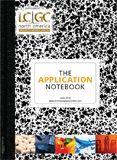Direct Measurement of Mass Balance in the Digestion of a Protein
The Application Notebook
Selective cleavage of proteins by the enzyme trypsin helps characterize larger proteins. While MS provides structural information, quantitative analysis is often based on detection by UV at 214 nm.
Selective cleavage of proteins by the enzyme trypsin helps characterize larger proteins. While MS provides structural information, quantitative analysis is often based on detection by UV at 214 nm. Depending on the specific protein, the type of protease used, and the time of digest, results can contain varying amounts of small peptides and free amino acids, which are not always detected. Charged aerosol detection can overcome some of these challenges because it is a highly sensitive universal technique that can deliver near uniform response for non-volatile analytes. An issue with all nebulization-based techniques is that detector response will change during gradient elution due to changes in nebulization efficiency. This can be overcome by applying solvent compensation using an inverse gradient after the analytical column but before the detector (1). The combination of the Thermo Scientific Dionex Corona ultra RS and the UltiMate 3000 RSLC system forms a single analytical platform offering a complementary approach to the traditional UV at 214 nm. It provides a more uniform response for both large and small peptides, as well as amino acids containing weak chromophores (2).
Experimental Conditions
System: UltiMate™ 3000 X2 RSLC system with Corona™ ultra RS™
Column: Thermo Scientific Acclaim RSLC Polar Advantage II, 2.2 µm 2.1 × 250 mm
Mobile Phase A: 0.1% TFA in deionized water
Mobile Phase B: 0.1% TFA in acetonitrile
Tray Temperature: 40 °C
Column Temperature: 35 °C
Flow Rate: 0.75 mL/min for analytical and inverse pump (1.5 mL/min total)
Gradient: See Gradient Tables in poster
Injection Volume: 20 µL
CAD settings: Filter: 3 Nebulizer Temp: 10 °C
Flow Diverted: 0.7–1.1 min
In Figure 1, stacked chromatograms are shown for CAD traces with reaction times of 2 h, 21 h, and control, where no trypsin was added to the BSA sample. This time course was accomplished by heating the autosampler tray to a specific temperature and adding delay times prior to injections. This automation permitted the constant monitoring of the reaction without significant labor.

Figure 1: Monitoring of the digest of BSA by charged aerosol detection.
Table I highlights the percent area recovery for two of the eight time points from 0 to 21 h. The CAD results were within 12% of the expected value over the entire duration of the study with the data from the 21 h point at 100.2% recovered. The results using UV detection for the same analysis varied from 59 to 74% recovery at 254 nm and 47 to 78% at 214 nm. These results are expected since the production of small peptides and free amino acid increases over time and these compounds typically have poor chromophores. This is not a significant issue for the CAD since the total mass of analytes does not change and analyte response remains consistent when inverse gradient is used.

Table I: Percent area recovery
References
(1) P. DeLand, J. Waraska, C. Crafts, I. Acworth, F. Steiner, and T. Fehrenbach, "Improving the Universal Response of Nebulization-Based UHPLC Detection," in Recent Developments in HPLC/HPLC, a supplement to LCGC North America, 29(s4), 45–49 (2011).
(2) C. Crafts, M. Plante, B. Bailey, and I. Acworth, "Sensitive Analysis of Derivatized Amino Acids Using UHPLC with Charged Aerosol Detection," presented at the 63rd Pittsburgh Conference, Orlando, Florida, 2012.
Thermo Fisher Scientific
22 Alpha Road, Chelmsford, MA
Tel: (978) 250-7000, fax (978) 250-7091
Website: www.thermoscientific.com


.png&w=3840&q=75)

.png&w=3840&q=75)



.png&w=3840&q=75)



.png&w=3840&q=75)














